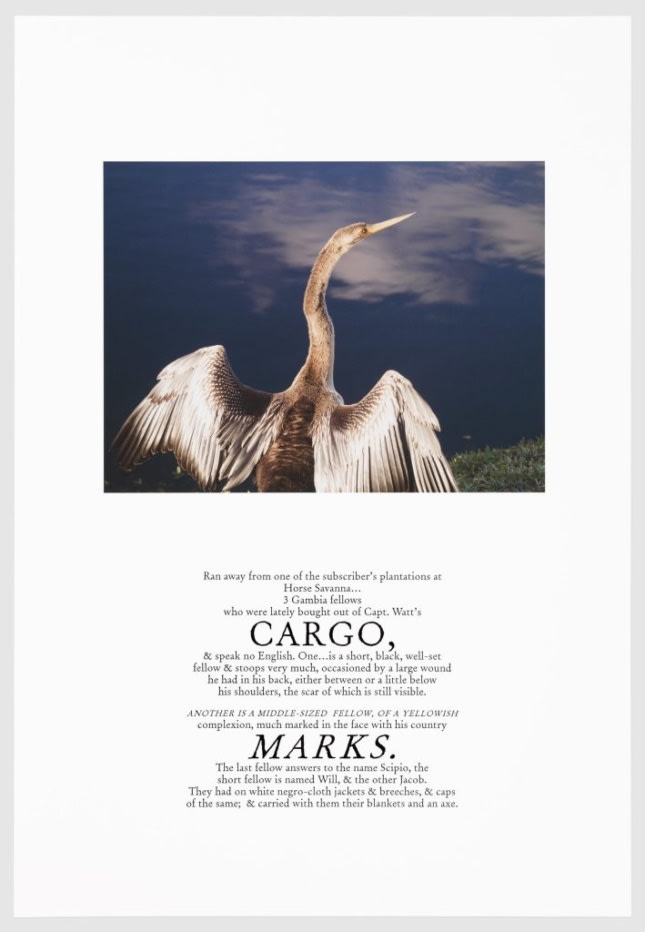“When I arrived there I was a journalist. And when I left on that very same day I became an artist,” said Keris Salmon, an African-American visual artist, describing her visit to a plantation that her white husband’s family had owned for over 100 years. “I couldn’t leave without making something out of it.”
What she made out of it was a print portfolio titled We Have Made These Lands What They Are: The Architecture of Slavery, a collection of 18 prints that were displayed as part of Pulled In Brooklyn at the International Print Center in New York City, which ran through June 15. Keris has since visited dozens of plantations across the American South, and taken photographs of the structures that remain, from the rough wooden siding of former slave cabins to the lace curtains of the “big houses” built with clay bricks by the slaves who lived there.

CARGO, from the portfolio, We Have Made These Lands What They Are: The Architecture of Slavery. (Courtesy Keris Salmon)
Salmon, a television journalist-by-training who had worked for NBC, ABC, and PBS before turning towards art, has done her research. The many stories, historical figures, and writings that she has unearthed reveal the secrecy and complexity of the slave era in America, secrets and complexes that are still pervasive today. The exhibition’s title was derived from a real-life encounter between a group of former slaves running back to their plantation after emancipation, and a group of white people observing and asking, why?
In the words of Salmon, “they responded nearly in unison, ‘we made these lands what they are.’”
Salmon’s work explores the expansive truth behind this phrase, revealing how America as a country was both physically and theoretically built by slavery, and how both positive and negative impacts remain, unflinching, within American society today.
Salmon has collected her photographs and snippets of text from historical documents and visits to dozens of plantations across the American South, and the resulting combinations of visuals and printed text express the pedestrian elements of slavery, rather than the shackles, whips, and leg braces of the horror stories. When asked why in an interview by PBS reporter Duarte Geraldino, Salmon replied, “Life then was very pedestrian,” with segregated norms made up of the plantation architecture, furniture, period lace curtains, “the kind of thing[s] that people encountered every day, black and white.”

RUINS, from the portfolio, We Have Made These Lands What They Are: The Architecture of Slavery. (Courtesy Keris Salmon)
Her texts are presented in a custom-designed typeface; the artist worked with Brooklyn-based printmakers Peter Kruty and Sayre Gaydos to create a visual language that focuses on the font’s significance without “hitting you over the head with it,” according to Gaydos. Resembling the lettering styles used for runaway slave and auction posters at the time, Salmon’s type spells out a different kind of story.
While the “architecture” that Salmon is referring to in her title is not explicitly that of the built environment, her work asserts the concept of slavery being the structure that America is built on. National political issues from unequal educational opportunities to mass incarceration are systems that remain today, just as the plantation houses and clusters of slave cabins in Salmon’s photographs remain. The Architecture of Slavery reminds us of the many deep connections between the history of race in America and the present moment.


